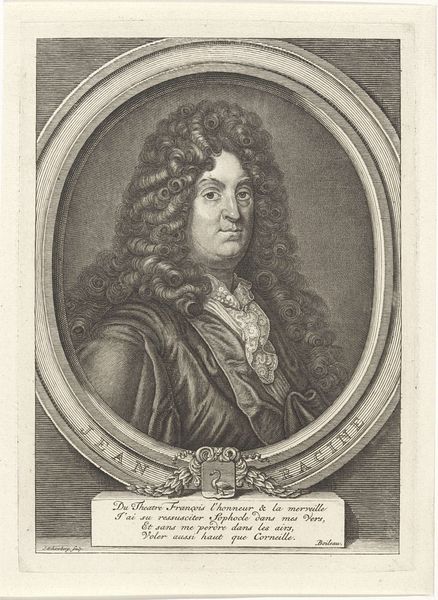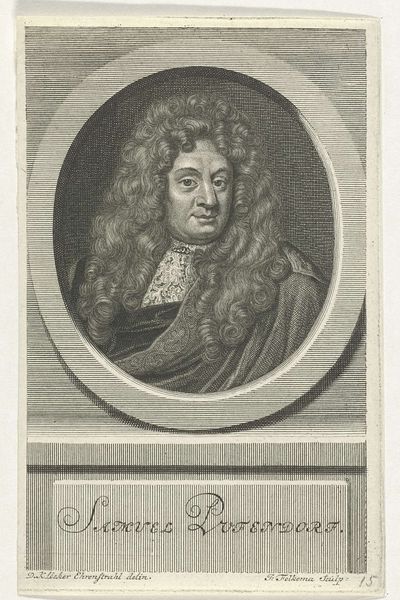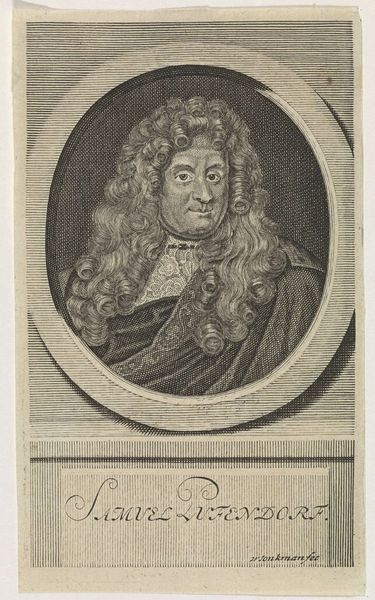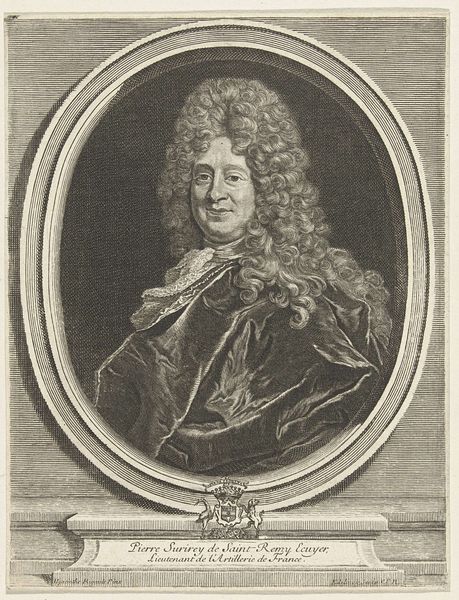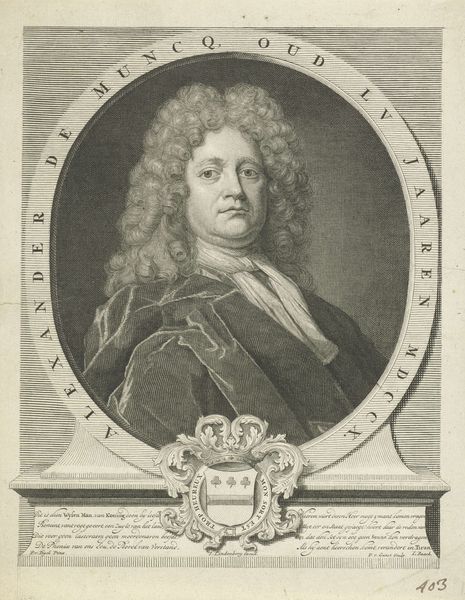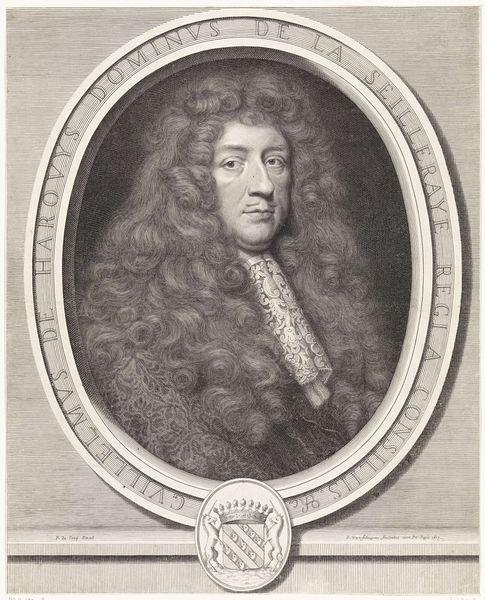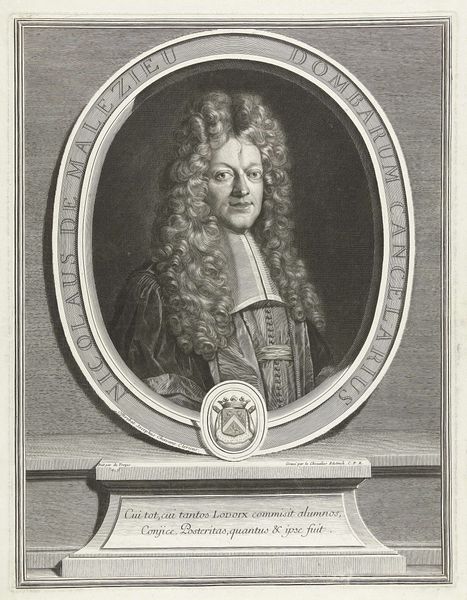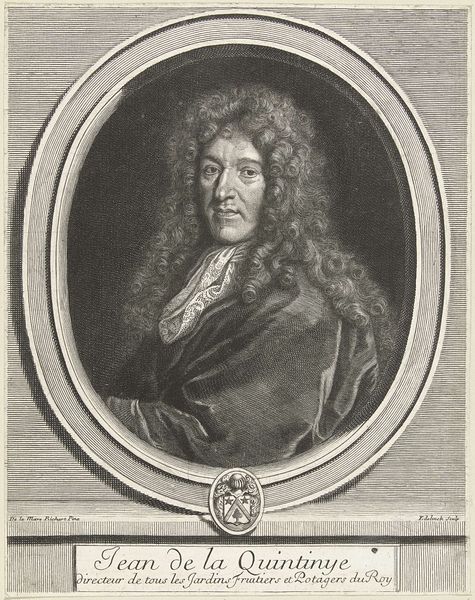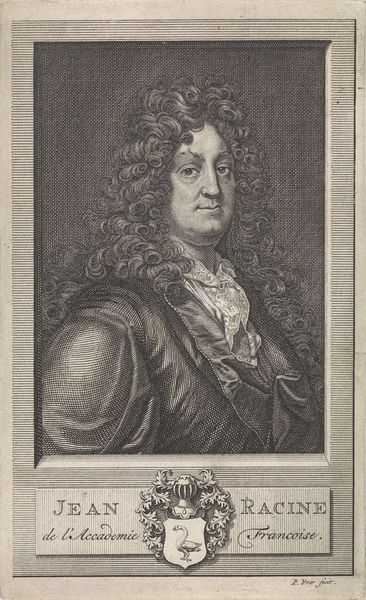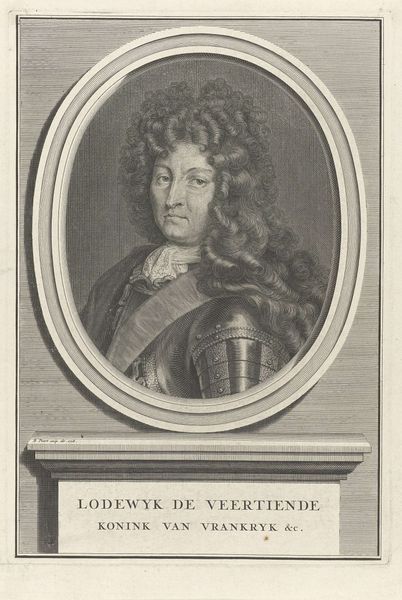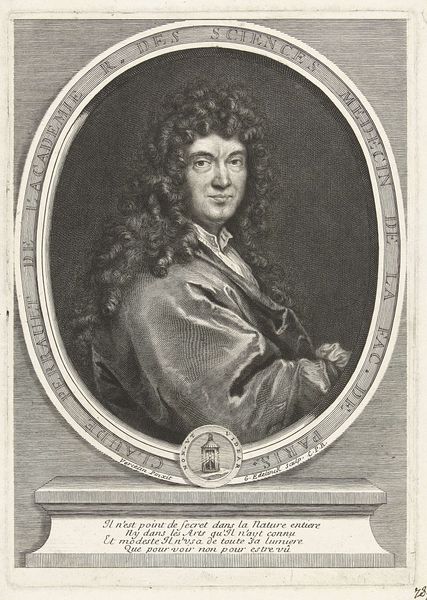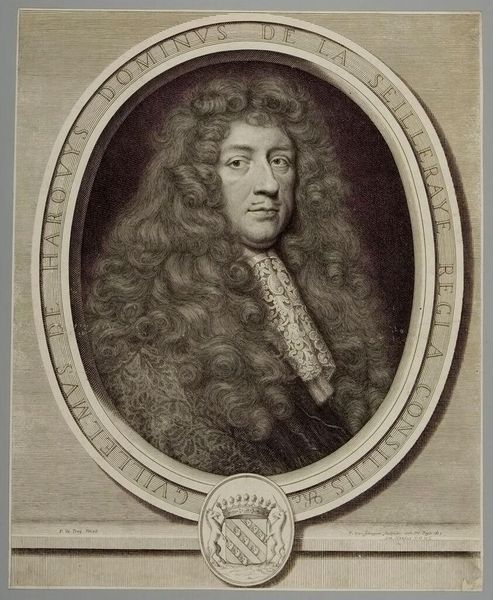
engraving
#
portrait
#
baroque
#
old engraving style
#
line
#
academic-art
#
engraving
Dimensions: height 253 mm, width 195 mm
Copyright: Rijks Museum: Open Domain
Editor: So, this is Gérard Edelinck’s engraving, "Portrait of Jean Racine," dating roughly from 1666 to 1707, and it’s housed at the Rijksmuseum. The intricate detail is amazing, but I'm also struck by how…official it feels, almost like a propaganda piece. What can you tell me about its historical context? Curator: The “official” feel is key. Consider the rise of academies and their impact. Portraits like these, especially engravings which allowed for wide distribution, weren't just about capturing a likeness. They were about solidifying status, associating individuals with power, and shaping public perception. Racine, as a member of the Académie Française, embodies that. The academies promoted specific styles, enforcing a kind of artistic and intellectual conformity. Do you see how this plays out in the visual language? Editor: Definitely. The formal pose, the elaborate wig – it all screams power and authority. It makes me wonder who this portrait was intended for, beyond just individual appreciation. Curator: Exactly! It's crucial to think about the social function. These prints were often commissioned by institutions or individuals seeking to bolster their prestige or commemorate someone important. They circulated among intellectual circles, reinforcing a certain hierarchy of knowledge and taste. The coat-of-arms lends further insight here, too. Who do you think got to decide how these people would be remembered? Editor: So, this wasn’t just a picture; it was actively constructing a certain image of Racine, approved by the Académie, no doubt. It's like state-sponsored image-making! It's interesting to look at this Baroque piece from a modern viewpoint of marketing and public relations. Curator: Precisely! It reveals how art became entwined with political and cultural agendas, long before modern media. Reflecting on its place in history gives the portrait renewed relevance, don't you think?
Comments
No comments
Be the first to comment and join the conversation on the ultimate creative platform.

